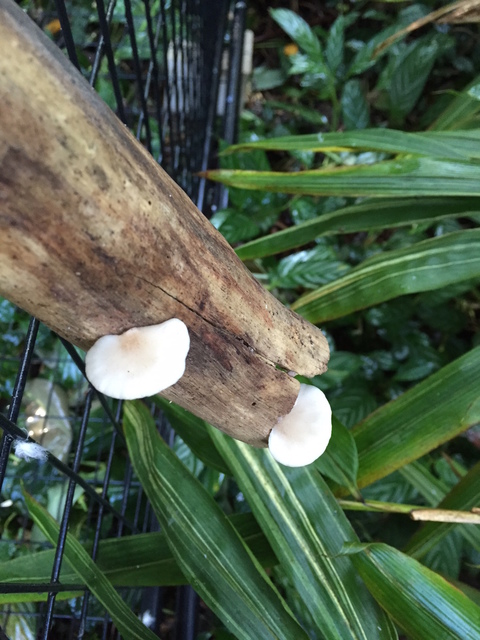The best disease prevention measure you can take with ornamental plants is to start with healthy or disease-resistant plants.
According to University of Hawaii plant pathologists, once an ornamental plant becomes badly diseased, it is difficult to nurse it back to health. For this reason, every effort should be made to prevent introduction of disease-causing organisms on plant material or in soil. Many common plant diseases are caused by fungus organisms.
Plants with poor or weak growth are usually more susceptible to these diseases. Good cultural and sanitation practices will help prevent trouble such as removing diseased parts like leaves or branches as soon as they appear. Treat pruning wounds with a specially prepared material to stop entrance of wood decaying organisms and wood feeding insects.
For treatment of fungus diseased plants, fungicide applications should begin when disease development first appears and should continue as recommended by the manufacturer.
Other organisms that cause problems on plants, people, and even buildings may not be diseases but are bothersome. Two types that are found throughout the tropical world including Hawaii are house mildew and green algae.
Mildew flourishes in damp places. Hawaii’s high humidity often creates conditions favorable to the growth of this unsightly problem.
Where mildew is already established on walls, remove as much as possible by scrubbing the discolored surfaces with a strong detergent in warm water. The remaining mold spores should then be killed with a treatment of household bleach, applied at the rate of 1 pint per gallon of water. If the infested surfaces need repainting, then the use of a mildew-resistant paint is recommended or a standard paint to which a mildewcide has been added. They also point out that paints that provide a hard surface will discourage the lodging of mold spores.
Algae commonly grows on the surface of soil that is moist for periods of time. This is very common during the rainy season. These minute green plants often develop in such profusion that it forms a rather thick, greenish to blackish mat. Growth of such magnitude in a turf planting is detrimental to the grass because algae competes with the grass for space and nutrients. In addition, if the algae mat dries, it forms a crust that prevents the movement of water into the soil.
The same conditions that favor the growth of algae also favor the growth of fungi that bring on turf grass diseases. In fact, a close association has been noted between frequent disease outbreaks and the presence of algae. Therefore it’s desirable to control both of these pests with one practice. Reducing the moisture level would be the ideal method, however, in many situations this is not possible, and other control measures must be used. The use of fungicides that are effective against both turf diseases and algae is an efficient method of control.
Bacteria, fungus and algae are not just bad guys. Limu is an algae, yogurt is the result of certain types of bacteria, and those delicious mushrooms we enjoy incorporated in gourmet cooking are a fungus.
However, prevention of disease organisms is vital and also includes keeping it out of Hawaii. Some folks get unhappy when they find they can’t bring certain plants or seeds into Hawaii, or if they can, they have to go through all kinds of red tape, fumigation or extended quarantines to get the plants through.
A few of these folks figure it is a bother to get permits and go through the proper procedure to bring plants to Hawaii. They smuggle a few plants thinking it won’t make any difference. This attitude couldn’t be further from the truth or more dangerous. Florida has one of the best examples of what happens when folks get careless about clean plant introductions. Lethal yellowing, a disease of palms, killed palms by the thousands there and is a threat to other areas like Hawaii. The disease affects coconut palms, manila palms, Veitchia merrilii, and Hawaiian fan palm, Pritchardia species. The disease attacks other types of palms, as well.
The disease, similar to a virus, is a mycoplasm that infects the plant. Taking palms from infested areas to an area free of lethal yellowing is extremely dangerous. A leafhopper is involved in spreading this palm plague. Florida lost 90 percent of its coconut palms and had to replace them with dwarf Malay coconut palms at the cost of hundreds of millions of dollars. There is no control at present except avoiding carrying this disease to unaffected areas.
Another disease that may have been accidently introduced to Hawaii is rapid ohia death thought to be caused by a ceratocystus fungus. It is presently killing large stands of ohia in the Puna area. No cure is known at this time, but sanitation is the key. Moving plant materials, or even wood, soil from infected areas to healthy forests could kill most of the Ohia in Hawaii.
This, again, shows why we should support our state and federal agricultural quarantines. Importing plants illegally could bring devastating diseases like these to Hawaii. There are ways to bring in new plants to Hawaii legally. The state Department of Agriculture and USDA Plant Quarantine Office can give you the details.
By following the law, hundreds of new plant introductions are being made each year. These can enrich our lives without bringing with them unwanted insects and diseases that could bring disaster to our economy.






